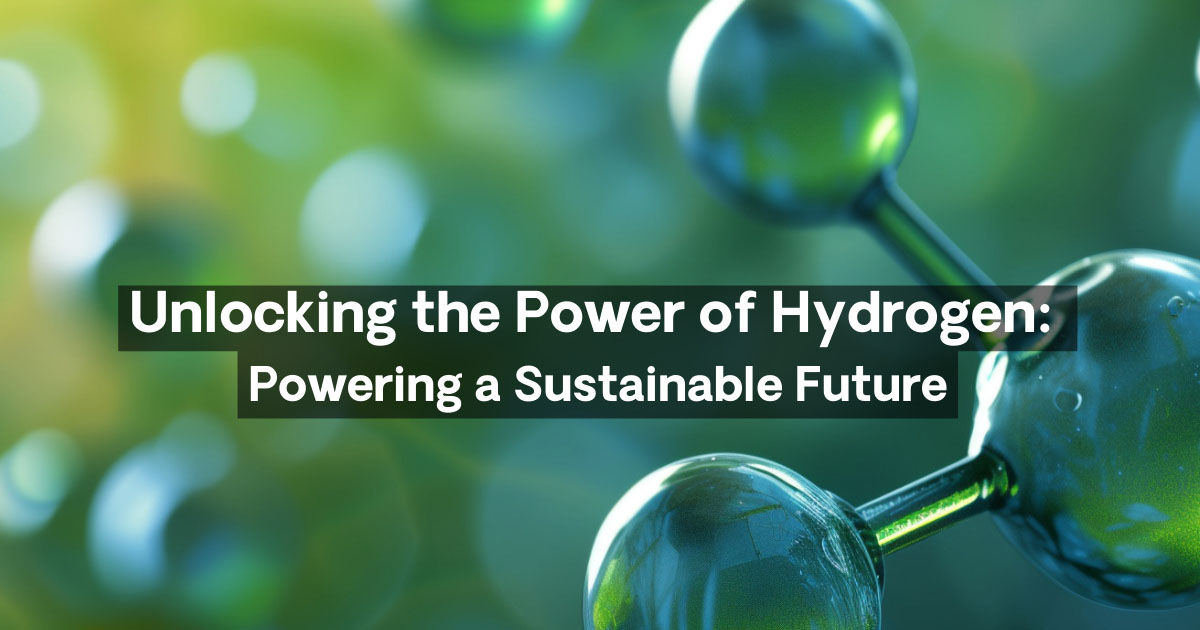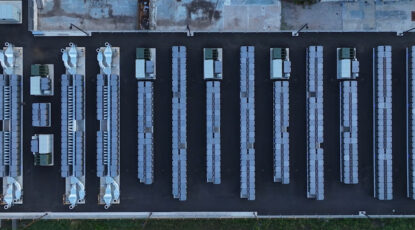Bloom Energy is working to advance three important hydrogen projects that will highlight the market leading capabilities of the company’s proprietary hydrogen electrolyzer technology.
- The Bloom partnership with Southern California Gas Company (SoCalGas) that powers a portion of the California Institute of Technology’s (Caltech) grid with hydrogen is progressing. Blending existing infrastructure with Bloom technology, the project utilizes water from Caltech’s service line and runs it through our electrolyzer using grid energy to create clean hydrogen. The hydrogen is then injected into Caltech’s natural gas infrastructure before being ultimately converted to electricity for campus consumption.
- Bloom and SK ecoplant, an engineering and energy solutions provider and subsidiary of South Korean conglomerate SK Group, launched a large-scale multi-MW green hydrogen demonstration using Bloom’s electrolyzer on Jeju Island, South Korea. The demonstration is due to commence in 2025 and aims to produce green hydrogen for fuel to support the transportation sector in conjunction with Korea Southern Power Co., Ltd (KOSPO) and local governments.
- Bloom Energy and Shell Plc. (Shell) announced a groundbreaking decarbonization study using Bloom’s SOEC technology. The collaboration aims to develop replicable SOEC systems that would produce clean hydrogen, for use at Shell assets around the globe. This study represents yet another pivotal movement for Bloom, as its hydrogen electrolyzer is deployed by hard to abate industries. The electrolyzer provides a solution that can simultaneously reduce carbon footprints while sustaining economic growth due to its world record setting electrical efficiency.
“These projects are the foundation of the company’s future growth,” said Ravi Prasher, Bloom CTO. “The day has finally come: clean hydrogen now sits squarely at the forefront of U.S. energy policy and Bloom Energy’s first-in-class hydrogen electrolyzer is ready to meet this pivotal moment.”
The Biden administration’s historic $8 billion investment in hydrogen hubs funded by the bipartisan Infrastructure Law sparked the creation of a national clean hydrogen energy network. Bloom was honored that our technologies were included in four of the proposals submitted to the U.S. Department of Energy as a part of these programs.
With the federal government placing such an emphasis on clean energy solutions, it is difficult to understate the outsized role a clean hydrogen economy will play in realizing our ambitious climate goals. Given its capacity to decarbonize hard to abate industries, clean hydrogen truly is the fuel of the future.
What is clean hydrogen?
Clean hydrogen can refer to hydrogen generated via electrolysis, a non-combusting electrochemical process that splits water molecules into hydrogen and oxygen using electricity. The higher the temperature of the electrolysis, the less electricity required. Compared to the highly-emitting, traditional method of creating “grey” hydrogen via steam methane reformation, electrolyzed hydrogen offers an efficient and affordable pathway to this important fuel of the future. Hydrogen generated from electrolysis using electricity from renewable sources like wind, solar, and nuclear offers an even cleaner fuel for our net zero future.
How can clean hydrogen support the energy transition?
With clean hydrogen, the sky is the limit. This fuel of the future has a wide variety of commercial and industrial applications with major implications for decarbonization.
- From heavy duty trucking to freight rail and urban bus transportation to ports, clean hydrogen has the capacity to fundamentally alter the transportation sector’s massive carbon footprint by immediately replacing highly emitting fossil fuel-powered combustion engines with clean hydrogen-powered fuel cells.
- Clean hydrogen’s most promising applications may be in high temperature, heavy industrial contexts like steel, glass, cement, and chemical manufacturing. Remember: the higher the temperature of electrolysis, the less electricity required to split water into hydrogen and oxygen. In these settings, excess heat from intensive commodity manufacturing processes can be captured and fed into high temperature electrolyzers to produce on-site hydrogen as fuel, eliminating fuel transportation costs and leveraging existing heat to power operations.
- Nuclear power plants offer an additional example where we can unlock the power of clean hydrogen. In this context, extreme, excess heat in the form of steam can be fed into high temperature electrolyzers to produce “pink” hydrogen. With zero emissions due to the abundance of heat and utilization of existing energy assets, nuclear and hydrogen are a perfect pair.
- And finally, clean hydrogen’s applicability in renewable energy projects has never been more important as governments respond to the climate crisis with the rapid and widespread adoption of solar power. Generating green hydrogen from renewable-based electricity sources like solar offers an amazing way to produce low cost, zero carbon hydrogen for a wide variety of commercial uses.
How does Bloom Energy’s hydrogen electrolyzer fit in?
Scalable and abundant clean hydrogen production from electrolysis was previously hindered by the cost of electricity. It is imperative for our net-zero future that hydrogen electrolyzers consume as little electricity as possible in order to support the financial viability of clean hydrogen. Bloom Energy has met this moment with promising results for the clean energy economy of the future.
Unlike conventional lower-temperature electrolyzers, such as proton electrolyte membrane (PEM) or alkaline, Bloom’s high-temperature electrolyzer generates 20-25% more hydrogen per megawatt (MW), demonstrating its superior performance and commercial viability. Demonstrations at both the Idaho National Laboratory’s Dynamic Energy Testing and Integration Laboratory and NASA’s Ames Research Center have proved a world record-setting level of electrical efficiency and also its replicability in large-scale, commercial applications.
Put simply, the record-setting electrical efficiency of the Bloom hydrogen electrolyzer has cemented the commercial viability of clean hydrogen. And the results speak for themselves as our company deploys this groundbreaking technology around the globe.



